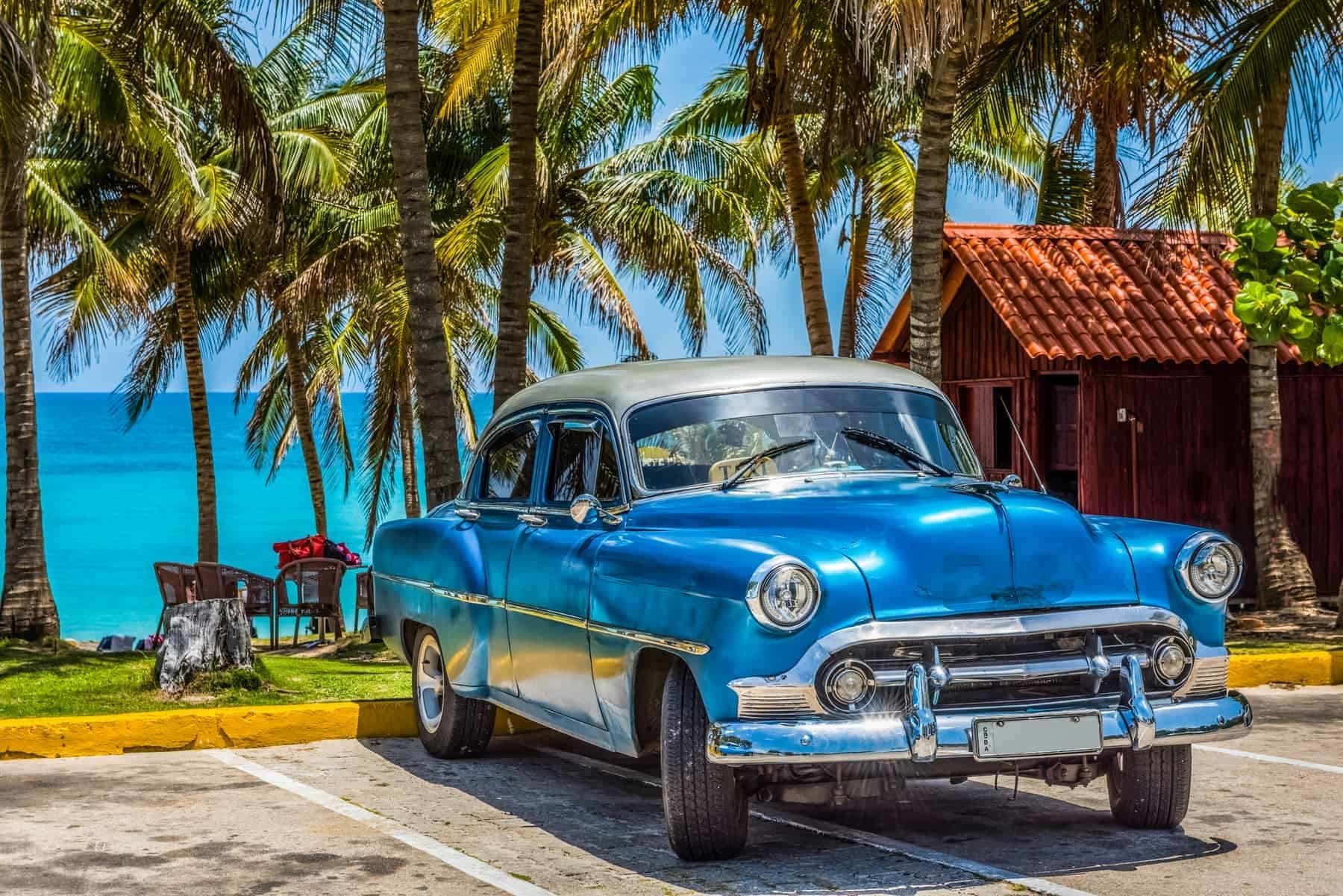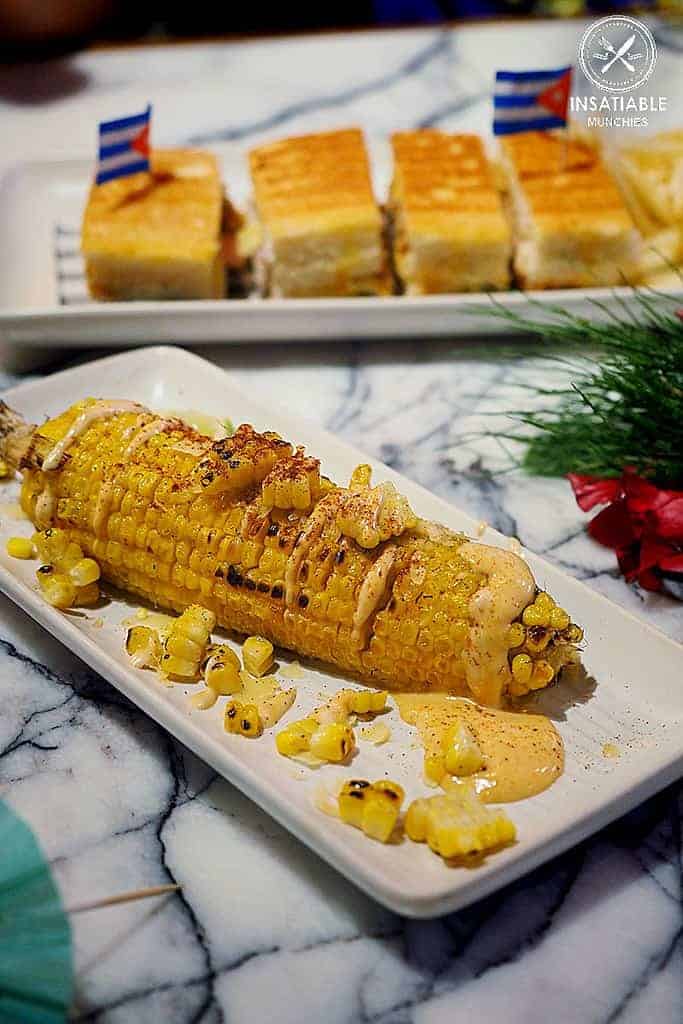Cuba, warm hearts and cool drinks
Cuba is a country that is rich in cultural history and political volatility, Cuba has a unique atmosphere that far exceeds the stereotype of the Caribbean destination of sun, sea, and sand. If you are looking for these tropical attributes and these heavenly beaches, you will find them in abundance on the beautiful Cuban coastline. But alongside its archetypal Caribbean wonders, Cuba has a lot to offer culturally.
Cuba moves with a mambo and a salsa beat
On the one hand, Cuba moves with mambo and a salsa beat that runs through all of its major cities. The combined influence of communism and colonialism provides tourists with unique images of the wealth and poverty juxtaposed in everyday life, as well as a wide range of monuments, museums and guided tours that illustrate the historical influence of each other. Holidays in Cuba open the way for travel to the Caribbean and for many good reasons. It is very affordable, it has an excellent tourist infrastructure, a very safe destination and above all, it suits the needs and styles of all types of travel. It is the largest island in the Caribbean.
The warm climate of Cuba
Havana is warm all year round, with daily average temperatures ranging from 21 to 27 ° C. May to October is the rainy season and June to November is the main hurricane season in the Caribbean. So for the best weather, visit between December and April. The months of March and April are the longest when the weather is not too humid and there is little rainfall – these are probably the best months to visit Havana.
Where is Cuba situated?
Cuba is to be found in the northern Caribbean Sea where the Caribbean, Gulf of Mexico, and the Atlantic Ocean unite. It is east of Mexico, south of both the U.S. state of Florida and the Bahamas, west of Haiti, and north of both Jamaica and the Cayman Islands. Please scroll down and see the map below right after this article.
Cuba is one of the last communist countries in the world and has not been invaded by tourists because of its political isolation for decades. Located only about 60 kilometers from Key West, Florida, it is working to open up its economy and increase its foreign exchange earnings through the tourism sector. If you want to know more about the country by being able to see and discover all its historical sites, there is no better way to do so than to book a visit to Cuba.

Varadero, Cuba – American blue Chevrolet classic car with silver roof parked on the beach in Varadero Cuba
What to do in Cuba as a tourist
These are authentic and sometimes different ways to experience Havana and Cuba.
Learn more about the Cuban Revolution
Everyone knows Fidel Castro, Che Guevara and the Cuban Revolution. However, learning in the capital where these historically important events occurred is a different story. In Havana, you can visit the Museum of the Revolution, which contains objects and photos from the time before the revolution until the death of Che Guevara. This is a really interesting place to visit and learn about the events of this era, sometimes from a different angle than the one we commonly describe in the Western media. A word of advice for me though is to make sure you read the revolution before visiting the museum, as it does not go into details about historical events, but more about the lives of its protagonists. Having a basic knowledge of the main actors and the order in which the historical events took place will ensure a more interesting and enjoyable visit to the Museo de la Revolución.

Vedado Havana
Wander the ruined streets of Vedado
Explore off the beaten track in Havana in Vedado, a vast, mostly residential neighborhood, renowned for its large buildings built during the Cuban sugar rush in the 1920s and 1930s, where an influx of American money has made this area more attractive Havana.
Many of the best hotels of this period were also built there, such as Hotel Nacional, Capri and Havana Libre – all famous for their opulence, gambling and corruption and all led by the famous Malecon Cuba!
Today, however, the money has long gone and you can wander the streets of sumptuous mansions with the unique architecture literally collapsing around you. Most Cuban diasporas who fled during the Revolution lived in Vedado and some of their houses now house embassies and various state institutions!

Drink a mojito at the place where it was invented
The Bodeguita del Medio is one of the best-known places in the country for drinking, partly because of its famous clientele (among past drinkers, Salvador Allende, Pablo Neruda, and Ernest Hemingway) and partly because of its invention. most famous, the mojito. James Bond took the opportunity in 2002, Die Another Day.

Cuban cigars and drinks
Smoking a Cuban cigar in Cuba
The legendary Cuban cigar is expected to become more accessible in the world as the geopolitical thaw settles. Even non-smokers may be tempted to take a whiff on the spot before the start of the export race.
The magnificent tobacco centers of Viñales
Now, see where the tobacco is grown. Rent a car and head west into the Viñales Valley, the most beautiful corner of Cuba, from which emerge remarkable limestone outcrops emerging from tobacco fields – a destination recommended as a winter sun.

Stay with a national hero at Che Guevara
Located in the heart of the island, between the streets of the pretty Santa Clara (the site of one of the most decisive battles of the Cuban Revolution), the great marble mausoleum, which is undeniably the most emblematic son of the country, is big and proud.
The last home of Che Guevara and 29 other revolutionaries is marked by a large bronze statue of the man. It also includes a fascinating selection of exhibitions featuring his firearm, binoculars, a bottle of water, countless photographs and various architectural works to reflect the character of the radical himself.

Tropicana Havana
Enjoy a cabaret at Tropicana Club
Under the glittering Caribbean stars, between the streets of Marianao on the west side of Havana, the nocturnal cabaret shows of the Tropicana Club have been going on since the 1930s.
Now that it is a pillar of the capital’s nightlife, the seal may not be cheap (the entrance costs around $ 60!), But it’s known worldwide for his dance shows and his musical evenings, accompanied by his daughters dressed in peacock feather feathers and shiny sequins.
Tropicana is also known for its unique reputation as a meeting place for Floridian La Cosa Nostr.

Las Terrazas
If you want to get away from urban life in Havana, head to Las Terrazas, an eco-village about an hour’s drive from Havana. This village was originally founded by the reforestation project launched in Cuba in 1968. After the beginning of this effort, more than 6 million (!) Trees were planted in the region and the village was founded shortly time after.
Las Terrazas is now considered a biosphere reserve by UNESCO and is home to more than a hundred bird species and several coffee plantations. In addition to being a beautiful place to visit, you can try a variety of activities here. These include zip lining, bird watching, local coffee tasting, etc. In addition, there are many local artisans, so you can buy beautiful local artwork.
There is a river running through Las Terrazas and you can stop here to swim with the locals – about 1000 people live in the village today. If you are hungry during your visit, you will also find an on-site restaurant that offers locally grown foods with vegetarian options. (This is not an easy feat in Cuba).
If you want to experience the tranquility of the village a little longer, you can stay at the Moka Hotel. This hotel essentially funds many village resources, such as the community library and the on-site museum. Las Terrazas was really one of the highlights of my trip to Cuba, I hope you’ll check it out!

Fusterlandia
Most people who come to Cuba have little idea of what to do after having a free Cuba, smoking a cigar and taking pictures next to classic cars.
But Fusterlandia is one of the most fun and interesting things to do in Cuba, and classic car drivers are happy to take you there.
José Fuster is an amazing local artist that many say is the Cuban Picasso. He created a dreamland in his neighborhood with mosaics that first covered his house and then extended into the neighborhood. It is a wild and wonderful place. Admission is free but, of course, they would prefer that you buy some local art to support the neighborhood after taking all their Instagram photos.

It is also a fantastic stop on an old convertible car trip because it is outside of Old Havana. Ask your driver to skip the Malecon and instead drive through the different neighborhoods. To get there, drive through the Vedado neighborhood with old mansions, and where Cubans eat and go out to drink. It has the best nightlife and the streets and architecture were modeled from Miami.
Then stop by Miramar and Playa, where rich Cubans live in impeccable mansions. Old Havana is great, but Havana is much more than that. Fusterlandia shows you a side that few tourists know.
El Cementerio de Cristóbal Colón
El Cementerio de Cristóbal Colón, also called La Necrópolis de Cristóbal Colón, was founded in 1876 in the Vedado neighborhood of Havana. Established in 1876, the Christopher Columbus Cemetery is named after Christopher Columbus and was designed by a Galician architect educated in Madrid with the name of Calixto Arellano de Loira y Cardoso. Built around a central chapel that was modeled freely according to the Florence Cathedral (also known as “Il Duomo”), the 150-acre cemetery is located on a grid of main central avenues and smaller side streets. As planned by Loire, the design organizes cemetery occupants according to their rank and social status, with the rich and well connected occupying prominent places on the main roads, while the most humble individuals (such as the damned, victims of epidemics and “pagans”) are relegated to the “suburbs”.
The Columbus cemetery contains more than 500 large mausoleums, chapels and family vaults, with styles ranging from the Renaissance to the Neoclassical and Art Deco. In addition to the countless impressive examples of funerary architecture, unique sites include an elaborate 75-foot-high memorial for firefighters who died in a disastrous fire throughout the city in 1890; a mausoleum for several professional and commercial organizations (such as the Society of Workers of La Tropical Brewery); special monuments dedicated to two baseball players, a chess champion (shaped like a piece of the white king) and a dedicated domino player (shaped like a double-three domino); and the burial sites of a remarkable number of poets, filmmakers, and musicians, including Ibrahim Ferrer Planas of the original Buena Vista Social Club. You can also find abandoned and maintenance-free graves and chapels of families now living in exile
The first occupant of the Columbus cemetery was the architect Loira himself, who died before the project was completed. Currently, the cemetery houses more than 800,000 graves and includes one million burials.
The longest Cuban cigar in the world
The longest Cuban cigar in the world is hidden inside a semi-secret exhibition inside the Morro Castle Historical Park. The huge hand-rolled article is the work of the master of cigars José Castelar Cairo, known locally as “Cueto”.
Cueto is not an ordinary cigar roller: before creating this enormous smoke, the Cuban master had established four previous world records. His first attempt was in April 2001 with a cigar of about 36 feet. In May 2003, he launched a cigar approximately 49 feet long, followed by a record 70 feet in April 2005.
Cueto became a living legend in Havana, Cuba. On May 3, 2011, he rolled and set a Guinness world record recorded with a monster cigar that measures 268 feet. As if that wasn’t long enough, Cueto decided to break his own record in 2016 by shooting a colossal “Habano” of approximately 295 feet, which he dedicated to Fidel Castro.
It is quite difficult to understand the length of the cigar when you enter the room in which it is located. A very realistic and accessible Cueto wax statue is also shown for everyone for photos in the cigar shop next to the exhibition.
Marvel at the works of the National Museum of Fine Arts
Another of the great and unmissable institutions to make your home in the middle of the historic streets of Old Havana, the National Museum of Fine Arts is full of masterpieces that narrate the various artistic periods of the island and its people.
Visitors can come and see the psychological portrait of the masses of Federico Beltrán, the politically infused paintings of Guillermo Collazo and the modern sculpture works of the stature of Rita Longa.
Another branch of the nearby institution offers a lot of mundane art, from ancient Greek vases to canvases by El Greco and other Spanish masters.
Discover The Local Beer Scene Craft
Havana and Cuba are more famous for their rum than for their beer. But that could change soon. There are already two microbreweries in Havana popular with locals and visitors alike. The quality of Cuban craft beer may not live up to Western standards at the moment, but it is very good after having been walking in the sun all day.
Visit The Four Historical Squares
There are four historic squares in the old town of Havana, all with their own historical background. The Plaza de la Catedral is one of the most famous monuments in Havana, home of the Cathedral of San Cristóbal. The cathedral and most of the other buildings within this square date from the 18th century. Here you will also find one of the best and most romantic restaurants in Old Havana.
Placed in 1559, the Old Square (Old Square) used to be known as New Square. It was originally used for military exercises and then served as an outdoor market. Today is the most vibrant and touristic square in Havana. Most of the buildings inside the square house have modern restaurants and cafes. Here is also one of the two craft beer breweries in Havana.
The Plaza de San Francisco is the second oldest square in Havana, located inland just next to the port where the large cruise ships dock. This square is the first sight that many tourists see when they arrive in Cuba. That’s why restaurants here are some of the most expensive in the country. The old stock exchange and the main post office are also found here.
The oldest square in Havana, the Plaza de Armas, was designed in the early 1520s, shortly after the foundation of the city. First it was called Church Square (Church Square) after a small church that remained there until 1741 before it was destroyed in an explosion. The square received its current name at the end of the 16th century when the colonial governor used the square for military exercises. Most of the buildings around it date from the late 18th century.
Make a trip in a yank tank
One of the best things to do in Havana is to tour the city in an old American convertible. The price of a one-hour trip varies from 15-30 CUC. Just remember to negotiate hard before entering.

colorful-maracas-for-sale Cuba
Where to stay
The Iberostar – Grand Hotel Trinidad is a great colonial-era hotel in the heart of Trinidad. There are only 36 rooms and suites for adults only, some with balconies overlooking the pools, have an indoor pool and another outdoor. Elegant and charming
The Meliá Jardines del Rey is an all-inclusive beach resort in Cayo Coco, with almost 1,200 colorful and modern rooms, including some great family settings. There is a wide variety of restaurants and places to eat, with everything from Japanese to Italian. You are right next to an idyllic stretch of private beach next to Flamenco Beach, and all kinds of water sports and activities are run outside the hotel.
Saint Elizabeth is an impressive colonial mansion located in a privileged location in a square. Large marble stairs, classic facades, balconies and a charming Spanish patio. The romantic rooms and suites have antique furniture, stunning views of the city from the roof and an excellent restaurant.
Santa Isabel is an impressive colonial mansion in a beautiful square, now converted into a 27-room hotel with romantic decoration, a rooftop bar and an excellent restaurant. There are many original details, such as the Spanish-style patio and the wide marble stairs.
The Marques Felipe Palace also has 27 rooms and has become a residence for colonial aristocrats in Old Havana, it was built in the 18th century. While the facade is classic, the interiors are contemporary and there is an impressive view from the roof terrace.
Economy 156 A beautifully restored apartment in the heart of Old Havana. The elegant interiors combine Cuban antiques with modern touches to create an elegant and homely atmosphere that is almost impossible to leave! Enjoy breakfast served under the rooftop pergola, and let your hosts know the city.
Walk 206. First luxury boutique in Havana. This mansion of the 30s has been restored to perfection with elegant rooms and suites individually decorated; Think of clean white lines and bold touches of color. The aqua blue restaurant serves excellent food and the hotel gallery is an attraction in its own right.
What to eat (Cuban cuisine)
The food in Cuba is a delicious mix of Native American, Spanish, African and other Caribbean influences, but even so, there is some truth in the rumors that Cuban food is tasteless. It is not a destination to visit specifically for food, but you will have to eat during your trip and there are many delicious options. Only a little research can help a lot to find fantastic food in Cuba.
From high-end restaurants to private homes and street food, the food in Cuba is surprisingly diverse these days. Cuban food is reputed to be soft because, for many years, it was soft due to lack of access to ingredients such as spices. Rice and beans are popular because rice and beans are cheap and abundant. So, even today, while you can find good food in Cuba, many low-end restaurants and street food stalls only offer simple meals.
Honestly, if you are hungry, this is one of the best Cuban foods to cram. It is the type of dish that completely consumes your taste buds and is so abundant.
Now, the ribs must be braised to be bright, but sometimes they may seem dry. Just make sure it’s soaked in a bunch of guava BBQ sauce long before eating it.
It is the kind of dish that leaves you full and is totally amazing after a relaxed and relaxed day at the beach.

Tamales, Cuban Speciality
Tamales are one of the few indigenous foods that remained in Cuba and are still done in the traditional way, even after centuries of practice.
Now, typically, Tamales are made with freshly ground corn and lots of condiments. All this is packed in corn husks, cooked and served to enjoy. You will find them throughout Cuba and it is easily one of the best Cuban foods and dishes you have to try.
Bowling the Cuban way
Bowling is a traditional Cuban dish consisting of roasted beef stuffed with chorizo that smells as good as it tastes.
For cooking, the meat is simmered with water and plenty of onions to flavor it. Typically, Bowling is enjoyed with piles of rice, cassava and many of those delicious fried bananas. It really is one of the best Cuban foods to try in Cuba.
Stuffed Pernil of Moors and Christians
This Cuban dish becomes more interesting since it is filled with another Cuban dish! A pork shoulder is marinated in orange juice, garlic, oregano, and pepper and then filled with rice and beans and cooked in the oven.
Roast Pork
A suckling pig is cooked whole on a grill until the skin is crispy. A spicy Cuban marinade called mojo is often served.

the famous Cuban hamburger
Frita, the Cuban Hamburger
Known as a Cuban hamburger, the frita is a patty of seasoned ground beef, sometimes mixed with chorizo, covered with crispy french fries, all interspersed between a Cuban bun. Some places even add a fried egg.

Elote Cuba, corn the Cuban way
Elote (Corn cob)
Corn on the cob in Cuba is known as corn, and it becomes a little different than in the USA. UU. The corn is grilled, rolled in small cheese, sprinkled generously with chili powder and completed with a little lime juice, which gives it a richer and spicier flavor.





